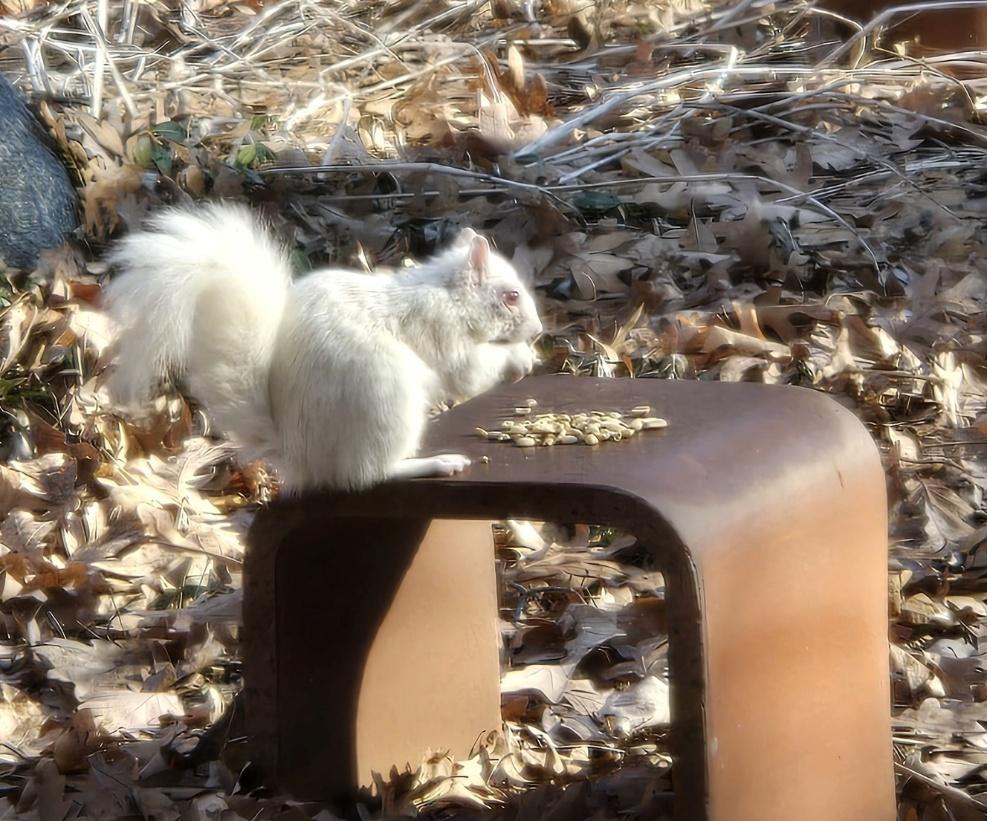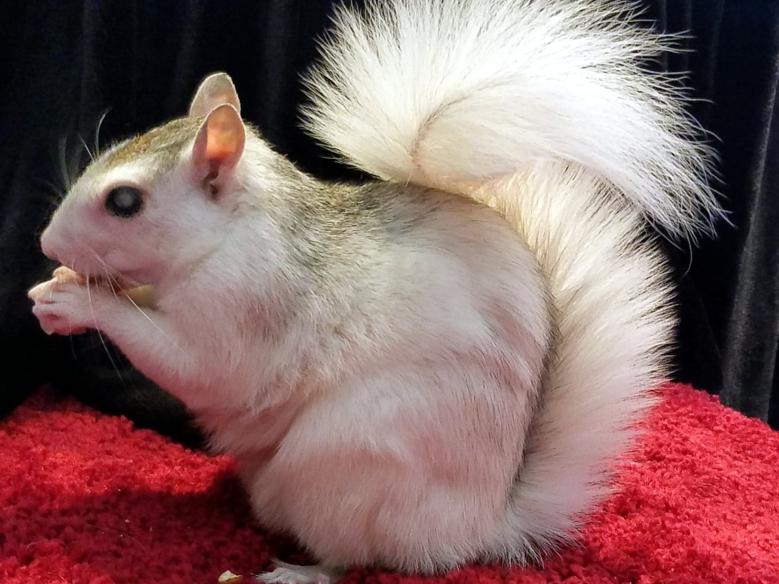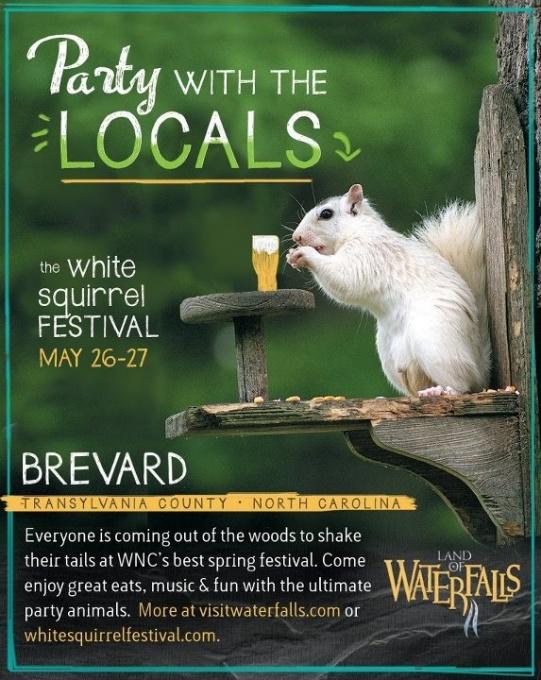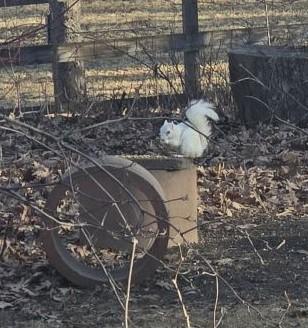Squirrels are something folks either love or hate. Here in the city we have the standard gray squirrel (Sciurus carolinensis) and the very busy red squirrel (Sciurus vulgaris). But occasionally, just occasionally, we have a black squirrel or even a rarer white squirrel. Many folks like squirrels no matter their color. Other folks consider squirrels nothing but furry rats and relocate them using Hav-a-Heart traps. I prefer not to judge, except of course when they consistently dig up my bulbs and forage in my houseplants. Then they are just annoying—no matter their color.
For years we have had the usual 12 to 15 squirrels coming to our yard for daily allotments of seeds and a drink of water. This year we are very excited to see a regular, very white visitor. In the past we have had a white squirrel on our street and in our yard for a few days, but then it would move on or for fall prey to a sad fate. I have wondered if a particular squirrel showing up had red eyes or some other color, but never got close enough to make that distinction. This time the white visitor is staying! And I can see his eyes—he’s an albino!

Let me say right now, this is not “my squirrel.” He (and he is a “he”) travels throughout our small neighborhood and has been spotted by several other neighbors—and has garnered additional treats wherever he goes. He is a bit scrappy and defends his extra food vigorously. Normally I would consider him a bully, but I am sure he has a hard time being the “odd man out” so I forgive his bad manners.
Albino squirrels are rare, but only 1 in every 100,000 squirrels are true albinos. There are two basic types of white squirrels: albino and leucistic. Albinos have pink or blue eyes and no dark pigments anywhere on their bodies. Squirrels that have white coats and dark eyes are called leucistic.

Leucistic white squirrel
Albinos’ lack of melanin negatively impacts the development of their eyes. They have no “glare shield” because that is provided by the melanin they are missing. This leaves them more susceptible to the harmful effects of sun rays. Their vision is not as good as black, leucistic, or gray squirrels and they have poor depth perception as well. Thus, their lack of melanin in turn makes them more likely to suffer injury and death by falling out of trees. (Photo credit: https://whitesquirrelinstitute.org/)
No matter whether they are leucistic or true albinos, white squirrels are simply treated better than their black or gray relatives. Small populations of white squirrels live in a number of widely separated locations across the country, from California and Texas to Illinois, North Carolina and Florida. For some reason, white squirrels seem more abundant in Illinois than any other state.

More often than not, when white squirrels appear, people roll out the red carpet for them. In Olney, Ill., a city ordinance protecting the white squirrels has been on the books since 1902. The patch worn by Olney police officers bears the likeness of a white squirrel. The same police vigorously enforce local ordinances that give white squirrels the right-of-way on city streets. Anyone caught trying to trap or sell a white squirrel faces a $500 fine. (Photo credit: https://www.facebook.com/olneypolicedept/)
Some communities have learned that white squirrels often mean tourist dollars. For example, Brevard, N.C., has an annual White Squirrel Festival.


There is even a white squirrel controversy with as many as five cities using the presence of white squirrels as their claim to fame. You can read about their annoyance with “other cities” making the claim. At the moment Olney, IL; Marionville, MO; Kenton, TN; Brevard, NC; Exeter, ON are all making the claim. You can read about their rivalry at https://www.roadsideamerica.com/story/29067#google_vignette
There is an Albino Squirrel Preservation Society founded in 2001 by folks concerned that the population of white squirrels on the campus of University of Texas at Austin was declining. Legend has it that students at UT Austin believe that if you see an albino squirrel on the day of a test, you will have good luck. Many claim acing tests they hardly studied for by just glimpsing such a squirrel on test day.
Much more information on white squirrels can be found at: https://whitesquirrelinstitute.org
White squirrels have been considered mythological creatures that symbolize the coming of change and the need to prepare for it! This white squirrel couldn’t have come at a more prescient moment! For now, however, I will just watch for the little fellow bounding toward the patio to get my attention, and then waiting for me to bring out some tasty treats!


